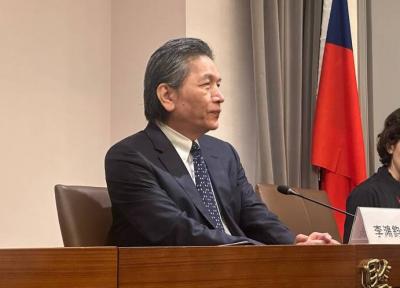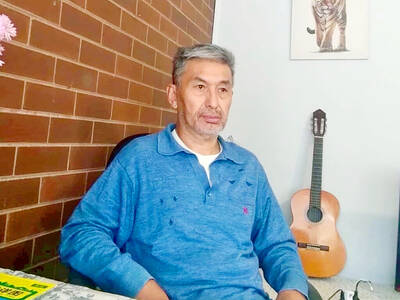More than 100 important archival documents of the nation’s transportation systems are to be on display in an exhibition at the Sun Yat-sen Memorial Hall next week, with some of the documents dating back to the Qing Dynasty.
Wu Huei-ling (吳慧玲), director general of the Department of General Affairs in the Ministry of Transportation and Communications (MOTC), said that the ministry spent two years going through the archives and selecting 116 pieces for presentation.
This was also the first time that the ministry has allowed the public access to these important documents, she said.
Wu said the documents were placed in separate locations, ranging from the National Palace Museum and Academia Historica to the National Archives Administration. For the presentation, the documents were chosen based on two criteria. First, they must be closely related to people’s lives. Second, they must demonstrate significant changes to the transportation system at the time.
“There are many agencies now under the ministry’s administration, from railways, highways, aviation, the postal service and telecommunications to tourism. We are this time only presenting documents related to transportation systems,” Wu said.
A written petition to construct the first railway in Taiwan, which was composed in 1887 by then-governor of Taiwan Liu Ming-chuan (劉銘傳), is one of the significant documents on display. In the petition, Liu outlined a plan to construct a railway line between Keelung and Tainan, with the funding coming entirely from the private sector.
Due to insufficient resources from the private sector, the railway project was eventually funded by the Qing government, which stopped the construction of the railway in Taiwan after the section between Keelung and Hsinchu was completed, Wu said. The around-the-nation railway system was not completed until the Japanese colonial era, the ministry’s documents showed.
The exhibition also displays documents on Liu’s purchase of three steam locomotives from German manufacturer Hohenzollern. Photographs of different steam locomotives will also be displayed in the exhibition. Meanwhile, the exhibition will show the imperial order issued in 1906 establishing the Postal Department, the precursor to the ministry.
It would also show the order from the Chinese Nationalist Party (KMT) government to officially establish the transportation ministry in 1926, when Taiwan was under Japanese rule, regulating affairs of postal services, aviation, railways, highways and telecommunications.
Other significant archives in the exhibition include those related to the launch of the National Sun Yat-sen Freeway in 1978, the first freeway in Taiwan. The 373km freeway connects Keelung and Kaohsiung. Documents related to the Central Cross-Island Highway, on the other hand, detailed the difficulties in constructing the highway as the route had steep cliffs, fault lines and other complex geological obstacles along the way.
For the opening ceremony of the exhibition, Wu said that the ministry has invited special guests Feng Tao-hsien (馮桃鮮) and Hou Shou-Hsing (侯壽興), who used to be on-board service personnel on highway bus and Taiwan Railway Administration respectively. Feng was one of the first-generation attendants on the Golden Horse express bus service. Hou was a waiter serving tea to passengers.
The exhibition in Taipei will run from Tuesday to Oct. 15. It will continue in the Kaohsiung History Museum from Nov. 1 to Dec. 15.
Admission is free.

Taipei has once again made it to the top 100 in Oxford Economics’ Global Cities Index 2025 report, moving up five places from last year to 60. The annual index, which was published last month, evaluated 1,000 of the most populated metropolises based on five indices — economics, human capital, quality of life, environment and governance. New York maintained its top spot this year, placing first in the economics index thanks to the strength of its vibrant financial industry and economic stability. Taipei ranked 263rd in economics, 44th in human capital, 15th in quality of life, 284th for environment and 75th in governance,

The Sports Administration yesterday demanded an apology from the national table tennis association for barring 17-year-old Yeh Yi-tian (葉伊恬) from competing in the upcoming World Table Tennis (WTT) United States Smash tournament in Las Vegas this July. The sports agency said in a statement that the Chinese Taipei Table Tennis Association (CTTTA) must explain to the public why it withdrew Yeh from the WTT tournament in Las Vegas. The sports agency said it contacted the association to express its disapproval of the decision-making process after receiving a complaint from Yeh’s coach, Chuang

Control Yuan Secretary-General Lee Chun-yi (李俊俋) tendered his resignation last night, admitting that he had misused a government vehicle, as reported by media. His resignation was immediately accepted by the Control Yuan. In a statement explaining why he had resigned, Lee apologized for using a Control Yuan vehicle to transport his dog to a pet grooming salon on May 20. The issue first came to light late last month, when TVBS News reported that Lee had instructed his driver to take the dog to the salon. The news channel broadcast photos that it said were taken by an unnamed whistle-blower, which purportedly showed the

A former officer in China’s People’s Liberation Army (PLA) who witnessed the aftermath of the 1989 Tiananmen Square massacre has warned that Taiwan could face a similar fate if China attempts to unify the country by force. Li Xiaoming (李曉明), who was deployed to Beijing as a junior officer during the crackdown, said Taiwanese people should study the massacre carefully, because it offers a glimpse of what Beijing is willing to do to suppress dissent. “What happened in Tiananmen Square could happen in Taiwan too,” Li told CNA in a May 22 interview, ahead of the massacre’s 36th anniversary. “If Taiwanese students or